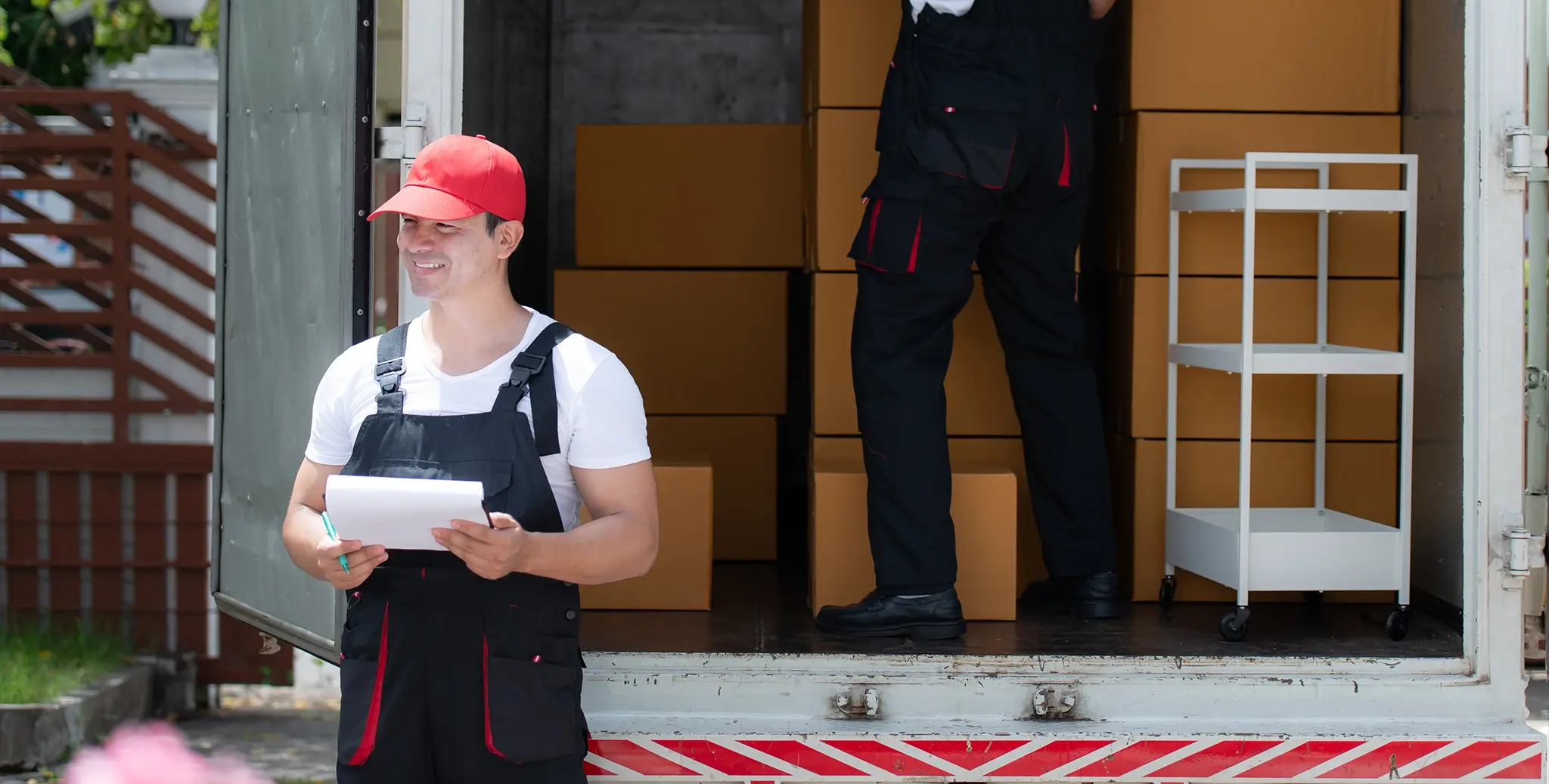

Packing for a move is like organizing a camping trip—what you forget could ruin the experience, so planning is everything.
From choosing the best packing material to figuring out where to buy bubble wrap, every decision matters when it comes time to pack and move.
So, if you’re heading across town or the country, the way you pack can either make your move seamless or seriously stressful.
In fact, over 35% of all moving damages are estimated to result from inadequate packing.
That’s the reason behind this smart moving guide, which helps you pack and move smarter, not harder.
Inside, you’ll find tips for every stage, from pre-move planning and packing breakables to organizing bedrooms and choosing the best packing materials.
If you’re ready to pack smart, protect your things, and avoid common moving headaches, let’s get started.
When you’re getting ready to pack and move, it’s tempting just to start boxing things up. However, without a plan, packing can quickly turn chaotic, and that’s when the real trouble begins.
Think about it: cracked dishes, lost chargers, a tangled mess of clothes and cords. These are the kinds of headaches that result from rushing or using improper packing techniques.
Poor packing is one of the leading causes of damage during a move, and those damages often cost more than just money—they cost time, energy, and peace of mind.
So, before you tape up that first box, let’s walk through a solid strategy to avoid the mess and make your move a lot smoother.
Before you even touch a single cardboard box, it’s time to zoom out and look at the bigger picture. A successful move doesn’t start on a moving day; it starts weeks in advance with the right preparation. And that’s where your pre-moving checklist comes in.
Here’s what to tackle before the real packing begins:
Sort and declutter: Walk through every room and decide what to keep, donate, sell, or toss. Less clutter means fewer boxes and a faster unpacking process later.
Create a moving timeline: Whether you have two weeks or two months, jot down what needs to happen and when. This keeps you focused and reduces decision fatigue.
Gather supplies early: Think boxes (in multiple sizes), packing tape, labels, markers, bubble wrap, and specialty containers for fragile items.
Label smartly: Use color-coded stickers or bold labels for each room. It’ll save you hours when you’re unloading boxes at your new place.
Notify key contacts: Update your address with the post office, banks, subscription services, and any other individuals who regularly send you mail.
Create an Essentials Box for the First Night: Pack a clearly labeled box (or suitcase) with everything you’ll need in the first 24 hours after your move—think clothes, chargers, toiletries, basic tools, snacks, and any must-haves for the kids or pets.
Now that your pre-move checklist is in place, it’s time to get hands-on. Instead of randomly stuffing boxes, the most efficient way to pack and move is to do it room by room. This method keeps everything organized and makes unpacking ways less stressful.
How to Pack Your Bedroom Efficiently
Your bedroom might seem like the easiest room to pack, but with clothes, furniture, and personal items, it can turn into a cluttered mess if you’re not careful.
Here’s how to pack a bedroom the smart way:
Use wardrobe boxes: These are perfect for keeping your clothes wrinkle-free and on hangers. Simply transfer your clothes straight into the box—no folding needed.
Pack personal items in labeled boxes: jewelry, books, and nightstand items should be placed in small boxes with clear labels. Keep essentials (like chargers and sleepwear) easy to find.
Disassemble bed frames: Unscrew frames and wrap pieces in blankets or bubble wrap to prevent scratches. Put screws and bolts in a zip-lock bag and tape it to the frame.
Use vacuum-sealed bags for linens: Pillows, blankets, and extra bedding can take up a significant amount of space. Compress them down to save room—and keep them clean.
How to Pack Breakables and Fragile Items Safely
Glassware, décor, electronics—these are the items most likely to break during a move. But with the right materials and technique, you can keep everything safe.
Here’s how to pack breakables like a pro:
Wrap each item: First, wrap it in packing paper, then add a layer of bubble wrap. This double protection cushions your items during bumps and drops.
Use divided boxes for dishes and glasses: These keep items separated and reduce the risk of damage from clinking in transit.
Label boxes clearly: Write “FRAGILE – THIS SIDE UP” on all sides. Movers are more careful when they know what they’re handling.
How to Pack Other Important Areas
Every room has its quirks. Here’s how to approach the rest of your home:
Kitchen: Use dish barrels or pack plates vertically to reduce breakage. Wrap each dish in paper or bubble wrap and bundle utensils together in labeled bags.
Bathroom: Seal all liquid containers tightly to prevent leaks. Use towels and washcloths to pad fragile items or fill empty spaces in boxes for added protection.
Living Room: Wrap electronics in anti-static bubble wrap and store them in padded boxes. Use zip ties or resealable bags to bundle and label cords, remotes, and accessories so nothing gets lost.
Garage: Pack tools in heavy-duty boxes and secure sharp or heavy items in bubble wrap or moving blankets. Ensure that you remove any fuel or batteries from the equipment.
Moving Day Checklist
So, you’ve planned, packed, and prepped—now it’s time to take action. Moving day can feel overwhelming, but having a clear checklist helps you stay organized and on track.
Last-Minute Checks: Defrost fridge/freezer 24 hours ahead. Avoid leaks or bad smells by unplugging and drying them out early. Remove bedding and load mattress covers. Protect your mattresses from dust and damage.
Load the Truck: Load large items first. Begin with furniture and appliances to establish a stable foundation. Stack boxes from heaviest (bottom) to lightest (top) to prevent crushing fragile items. Place fragile items on top or in your vehicle.
Keep the Essentials Box and Valuables Separately: Your essentials box, packed earlier, should stay close, along with personal documents, electronics, jewelry, and any other items you can’t risk misplacing.
Home Check: Check all rooms, closets, and drawers. A final walkthrough ensures nothing is left behind. Leave keys and garage openers if required, especially for rentals or home sales. Lock up and hand it over to the new owner or landlord.
Post–Move Tips
You made it! The boxes are in, the door is shut, and you’re standing in your new home. But before you can fully relax, there’s a little more to do.
This final step helps you settle in quickly, keep your momentum, and avoid that “what now?” feeling after the big pack and move.
Unpack Essentials First
Bathroom: Set up toiletries, toilet paper, and towels—you’ll need these right away.
Bedroom: Reassemble beds and unpack linens so everyone can rest after a long day.
Kitchen: Unpack basic cookware and food items to make simple meals without the stress.
Reconnect & Settle In
Reconnect appliances and electronics: Hook up your fridge, Wi-Fi, and devices so your home starts functioning immediately.
Check smoke detectors and security systems: Safety first—test everything to ensure it’s working.
Register your vehicle in the new state: Stay ahead of legal formalities.
Meet neighbors and explore the local area: A friendly intro goes a long way and helps you feel at home.
Common Mistakes to Avoid When You Pack and Move
Even after all the planning, a few simple packing mistakes can undo your hard work. As you wrap up your move, avoiding these common slip-ups can help protect your belongings and save you time, energy, and stress.
Mistake | How to Avoid | |
Overloading Boxes | Heavy boxes can break open or cause injuries during lifting. | |
Skipping the Essentials Box | You’ll waste time searching for things like chargers, meds, or toothbrushes. | |
Not Labelling Clearly | Movers won’t know what’s inside or how to handle fragile items. | |
Using the Wrong Packing Materials | Items can get damaged in transit if they are not properly cushioned. | |
Waiting Until the Last Minute | Rushed packing leads to broken items and misplaced belongings. | |
Not Planning Truck Loading Order | Important or fragile items can get buried or crushed. |
Start by researching neighborhoods based on your budget and lifestyle. Use rental websites like Zillow, Apartments.com, and local Facebook groups. If possible, visit in person or schedule virtual tours. Miami’s rental market moves fast, so be ready to apply quickly.
Aim for at least three months’ worth of expenses, including rent, utilities, groceries, and transportation. Expect to pay the first month’s rent and security deposit upfront. If moving long-distance, budget for moving costs, furniture, and emergency expenses.
Yes! Miami has co-working spaces, strong Wi-Fi, and a thriving digital nomad scene. Areas like Brickell, Wynwood, and Downtown are great for remote workers, offering cafés, networking events, and work-friendly environments.
Beyond rent, expect high parking fees, tolls, hurricane preparedness costs, and expensive groceries. Dining out and entertainment can also add up quickly. Budget for unexpected expenses like AC repairs.
Join local events, networking groups, and social clubs. Apps like Meetup and Bumble BFF help connect newcomers. Miami has fitness classes, beach meetups, and cultural festivals.






© Copyright 2025 FloridaMovingExpert. All Rights Reserved.